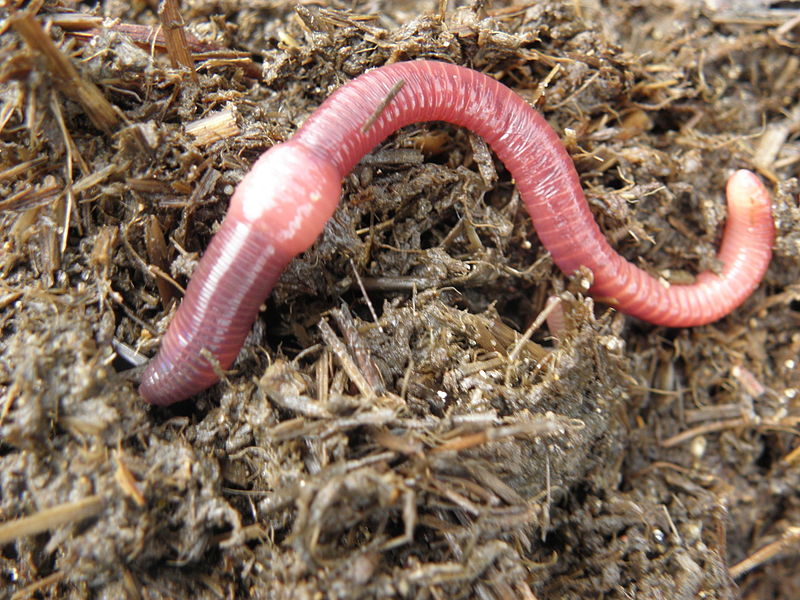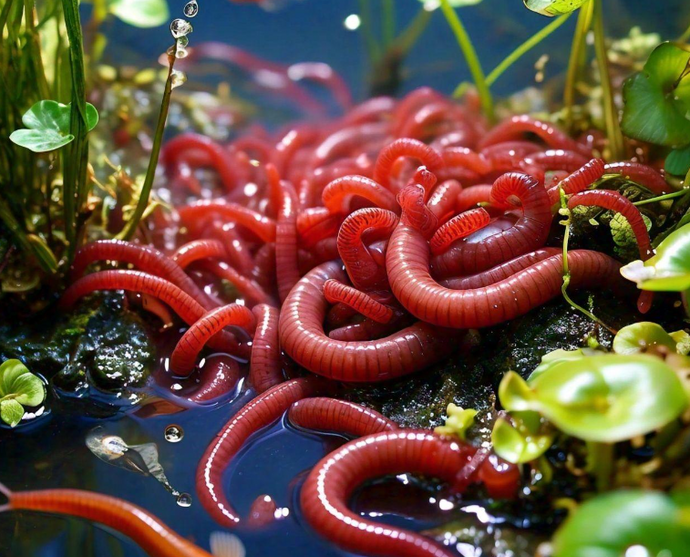Highly efficient red worms: Easy care tips
Highly efficient red worms: Easy care tips
Blog Article
Just How Red Wigglers Can Increase Your Organic Waste Recycling
Red wigglers stand for a critical part in boosting natural waste recycling, effectively transforming everyday kitchen scraps and garden debris right into important worm spreadings. This process not just minimizes the volume of waste sent out to land fills but additionally improves dirt vitality, promoting healthier plant development without the demand for synthetic fertilizers. Recognizing the complexities of developing a vermicomposting system and the optimum look after these worms can considerably enhance the advantages. The inquiry remains: just how can one successfully incorporate this method right into their regular to make the most of effect?

Benefits of Red Wigglers
Red wigglers, a kind of composting earthworm, deal numerous advantages that make them very useful in organic waste recycling. These worms can refine cooking area scraps, garden waste, and also paper products, changing them into nutrient-rich castings.
In addition, red wigglers enhance soil aeration and drainage via their burrowing tasks, promoting a healthier root setting for plants. Their spreadings are abundant in advantageous microorganisms and vital nutrients, promoting robust plant growth and boosting dirt structure (red wigglers). In addition, making use of red wigglers in composting is an eco-friendly choice to chemical fertilizers, which can have harmful adverse effects.
Furthermore, vermicomposting with red wigglers is a low-maintenance and effective technique of recycling natural waste, making it easily accessible for houses and areas alike. Their rapid recreation rate makes sure a constant supply for recurring composting initiatives, better amplifying their advantages. Overall, red wigglers work as a crucial component in lasting waste management and dirt improvement techniques.
Establishing Up a Vermicomposting System
Producing an effective vermicomposting system requires careful preparation and factor to consider of various elements that add to its success. The structure of a successful system begins with selecting a suitable container. Options range from industrial bins to homemade options, but it is vital that the container is well-ventilated and suitably sized to fit the variety of red wigglers.
Next, the option of bed linen product is crucial. Suitable bed linens includes shredded newspaper, cardboard, or coconut coir, which supplies both a habitat and a resource of carbon for the worms. The bed linens should be dampened yet not excessively damp to stop anaerobic problems.
Keeping the ideal environment is necessary. Red wigglers thrive in temperatures in between 55 ° F and 77 ° F(13 ° C to 25 ° C )and call for a pH degree around neutral. Checking wetness degrees is additionally vital, as also much dampness can cause odor issues, while insufficient can dry the worms.
Last but not least, placing the vermicomposting system in a shaded area shielded from straight sunlight will certainly assist keep a steady atmosphere. With these considerations in mind, one can efficiently set up a thriving vermicomposting system that improves natural waste recycling.
What to Feed Red Wigglers
Feeding red wigglers the ideal materials is fundamental to keeping a healthy vermicomposting system. These worms flourish on a diverse diet regimen mostly made up of organic issue, which consists of fruit and veggie scraps, coffee premises, crushed eggshells, and shredded paper. It is crucial to stay clear of feeding them meat, dairy, oily foods, or any kind of processed items, as these can develop odors, bring in bugs, and cause an unhealthy setting.
A well balanced diet for red wigglers promotes optimum digestion and nutrient manufacturing. Objective for a mix of eco-friendly materials, high in nitrogen, such as veggie peels and grass cuttings, and brown materials, rich in carbon, like dried out leaves and cardboard. This equilibrium guarantees a sustainable food resource while keeping wetness degrees in the worm bin.
Furthermore, it is recommended to cut or shred larger scraps to quicken decomposition and make the food extra available to the worms. On a regular basis checking the intake price will help identify the proper quantity to feed, protecting against overfeeding and preserving a growing environment. By giving an ideal diet, you not just sustain the wellness of red wigglers however likewise boost the efficiency of your vermicomposting efforts.
Keeping Your Worm Container
To guarantee the wellness and performance of your vermicomposting system, maintaining your worm bin is critical. Normal surveillance of moisture degrees is necessary; the bedding must be damp however not soggy. If it comes to be also damp, excess dampness can lead to anaerobic conditions, damaging your worms. Conversely, if it is too completely dry, worms might come to be non-active or pass away.
Temperature level is another important element. Preferably, the worm container ought to be kept in between 55 ° F and 77 ° F(13 ° C to 25 ° C) Severe temperature levels can worry or eliminate your worms. To achieve this, put your bin in a climate-controlled atmosphere away from straight sunlight or warm resources.
Aeration is essential for oxygen flow. Carefully transforming the bed linens with a garden fork every few weeks will aid freshen the product and prevent compaction. In addition, be watchful concerning the bin's smell. A foul smell may indicate overfeeding or a discrepancy in the carbon-to-nitrogen ratio. If this occurs, reduce feeding and include even more carbon-rich materials like shredded paper or cardboard.
(Hickory)
Making Use Of Worm Castings in Horticulture

Worm spreadings, usually described as "black gold" by gardeners, are an extremely healthy natural fertilizer that can dramatically enhance soil health and wellness and plant development. These castings are created by red wigglers as they absorb raw material, resulting in a rich, dark, brittle material bursting with beneficial bacteria.
Incorporating worm castings right into yard soil enhances its structure, aeration, and moisture retention, developing an optimal atmosphere for root development. The high nutrient content of worm spreadings, consisting of nitrogen, phosphorus, and potassium, adds to energetic plant development and increased yields. In addition, worm castings contain crucial trace minerals and enzymes that advertise the total health of plants, allowing them to better withstand insects and diseases.
Worm castings can be used straight to the soil or blended into potting blends for container horticulture. A slim layer spread over garden beds or included in compost heap can likewise enhance the microbial activity and nutrient profile of the garden compost. As a sustainable and green fertilizer choice, worm castings sustain organic horticulture methods while minimizing dependence on artificial fertilizers, therefore fostering a healthier ecosystem.
Verdict
Finally, the assimilation of red wigglers right into organic waste reusing techniques presents a feasible remedy for improving dirt wellness and advertising lasting horticulture techniques. By properly decomposing kitchen scraps and garden waste, red click to find out more wigglers contribute to nutrient-rich worm castings that boost soil aeration and wetness retention. This eco-friendly strategy not just reduces garbage dump payments yet likewise diminishes the dependancy on chemical fertilizers, eventually cultivating healthier environments and liable waste monitoring techniques.
Report this page